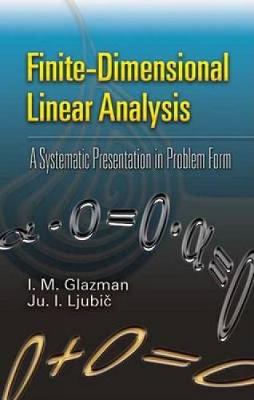Dover Books on Mathematics
2 total works
First published in Russian in 1969, this remarkable book develops the subject of linear algebra in a novel fashion: it presents a logically interconnected sequence of propositions and problems--some 2400 in all--"without proofs" but with a scaffolding of hints and pointers. The student is asked to work out formal proofs systematically, proceeding from simple verifications to relatively advanced strategies and techniques of proof. The material is organized into ten chapters.The authors have based their approach on the fundamental pedagogic proposition that the best way to learn mathematics is to "do" mathematics-- that the essence of understanding any given set of mathematical propositions comes when the student succeeds in proving them for himself, however roughly, rather than after a mere reading of a series of proofs, however polished. This aspect of the book will appeal to strongly motivated students: it can be used as a resource for independent study and in cooperative seminars, preferably without faculty presence. Of course, it can also be used as the basis of more conventional lecture presentations. It is suggested that the book be introduced at the senior or the first-year graduate level.The book is also meant to give insight into functional analysis, which may be formulated as linear analysis within an infinite-dimensional framework. As the student allows his consideration of the propositions move toward the limiting case of unrestricted dimensionality, he will find that his conceptual outlook approaches that proper to functional analysis. In that regard, the book represents an introduction to the latter subject, free of the difficulties inherent in the explicit admission of infinities.

